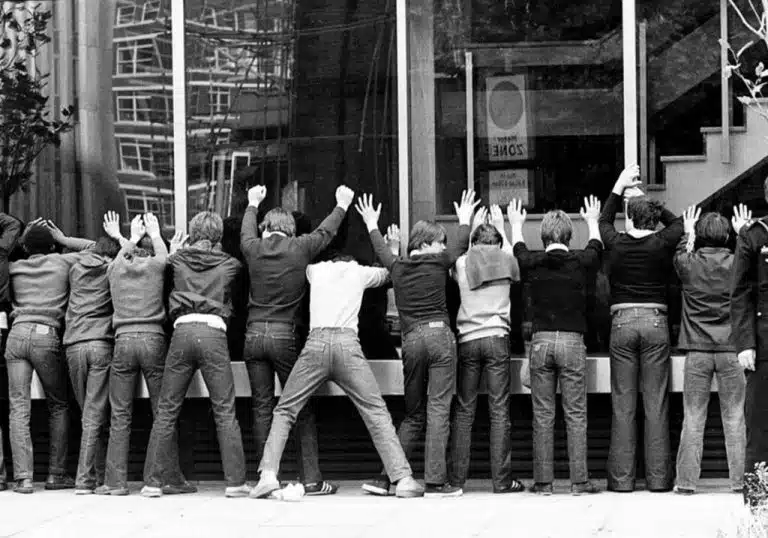The genesis of professional crime in Ukraine

There are many criminal specialties. There are officially about 30 specialties of thieves alone, although in practice, of course, there are more of them. Such a variety of criminal specializations is determined by the laws of the development of society and reflects its specific historical realities. An industrial society, unlike an agrarian one, is characterized by a high degree of specialization and integration, which increases labor productivity. This also applies to criminal activity.
The history of the genesis of professional crime in Ukraine is a vivid confirmation of the dependence of the nature of crime on specific social conditions. One of the first professional criminals were the so-called “thieves from the highway”, that is, robbers, for whom robbery was not just a criminal occupation, but a way of life. The emergence of this profession was the result of a historical paradox.
Kievan Rus-Ukraine managed to avoid the slave system, but the Mongol-Tatar invasion pushed its development far back. The Principality of Moscow was formed on the territory of Kievan Rus, and later the Russian Empire, in which legalized serfdom existed until 1861. Difficult living conditions forced peasants to flee from their oppressors, and since legalization in other territories was impossible (except for Cossack lands), robbery became the only means of subsistence.
As for thieves, before the beginning of industrialization, this profession could not be widely spread. This is explained by the fact that there were no large cities whose inhabitants did not know each other by face. This factor made theft impossible as the main source of income, because the neighbors immediately learned about it. In addition, such sanctions as cutting off the hand, branding on the forehead, tearing out the nostrils, or execution were applied at that time. Therefore, thieves could not lead a sedentary lifestyle. For that period, crimes were committed at night in inns, post offices, that is, in places where people did not stay for a long time.
Perhaps the most ancient specialization of thieves was horse stealing. For a long time, large massifs of forest-steppe and steppe remained a boundary between the settlements of the proto-Ukrainian ethnic group and various nomadic tribes. For the latter, stealing a herd not only from an opponent, but also from a neighbor was not considered a shameful occupation. Moreover, it was a sign of military prowess.
Even from the history of Kyivan Rus, there are known cases when princes, having learned about the intentions of nomadic tribes to carry out a raid, recruited small detachments of volunteers from their own wives to steal the enemy’s horses at halts, which sometimes led not only to the limitation of maneuverability, but also to the refusal of the nomads to continue the raid.
Horse stealing remained a fairly common phenomenon even during the rapid capitalist development of the Russian Empire. The researchers of this problem noted a significant fragmentation of specialization among horse thieves, as well as a high level of organization from the Tavrian steppe to the Far East.
There were rare cases of detention of herds of horses stolen from horse breeders in the Black Sea region on the border with Manchuria. Practically in every region there were specialists who radically changed the appearance of horses — repainting the skin, changing the shape of hooves, teeth, horseshoes, trimming manes or tails. Drawing an analogy with modern car thieves, we are convinced that little has changed in the methods of their criminal activity.
Only the object of the crime became different
In the 40s of the XIX century, further distribution of criminals by types of activity took place, which led to an increase in their professionalism. Beggars were kept apart, thieves – in a thief’s environment, robbers – in a robber’s environment. In this way, the relevant criminal elite was concentrated and there was someone to learn from. Underground schools were created for minor thieves, the most gifted were sent abroad to improve their qualifications. The training was conducted by “professors” of the criminal world. Thus, thieving professions appeared in Odessa, which were divided into 8 ranks, and robbers had one rank. Ix was called “tweezers”. The band of thieves was divided into “marvihers” (pickpockets), “kvatyrniks” (stole through kvatyrniks), “maidanschik” (stole from people sleeping at train stations), etc. Some of these professions still exist today.
It is worth pointing out the cyclic nature of the structure and dynamics of professional crime in Ukraine from the beginning of the 18th to the end of the 19th century. Cyclicality was caused by rapid economic development, primarily in the Black Sea region, and the growth of port cities and industrial centers.
This was accompanied by an increase in the number of self-interested crimes, their intellectualization, and the rise of professional criminals to the international level. For example, the case of a group of counterfeiters led by Ternov, considered in 1870 by the Odesa District Court, testifies to the fact that they have factories for forging treasury papers in London, Hamburg and other cities of Western Europe.
At the end of the 19th and the beginning of the 20th centuries, crop failures became more frequent in the south of Ukraine, and ruined peasants flocked to the city. This significantly replenished the army of criminals. A bright examplethe house of a professional criminal of that time was the legendary robber Vasyl Chumak. At the age of 15, he embarked on a criminal path, stealing entire trains, robbing landowners’ estates, and engaged in smuggling. He was arrested nine times, but each time he escaped from prison or penal servitude. In 1892, Chumak was sentenced to death for horse theft. He was then over 100 years old. Other names are also known, such as “Mishka Yaponchyk”, Sonka “Zolota Ruchka”, the international thief “Doctor Slonimskyi” and others.
At the beginning of the 20th century, for the first time in the history of domestic banditry, a racket appeared in Odessa, so-called “roofs” began to be created. For example, Golchenko issued indulgence notes to merchants who paid him tribute with the following text: “Don’t touch. Bohun.” In 1915, a group of female extortionists was discovered. At the same time, they caught the gang of Anton Malyovany, who committed 9 murders on commission.
After the October Revolution of 1917 and the First Civil War, selfish and violent crime increased sharply. But credit must be given to the Bolshevik government, which was able to tame it quite quickly. True, this was done at the cost of harsh repression and the introduction of total surveillance of everyone. However, professional crime, contrary to Soviet propaganda, was not eradicated.
The thesis of the famous Western criminologist Durkheim about the disbelief of the average citizen in regulatory systems that do not reflect the realities of life was also confirmed in the CPCP. At the end of the 70s, the presence of a huge shortage of goods on the consumer market led to the emergence of a network of underground workshops that produced products in high demand. A new criminal specialty appeared – “tradesman”. In a short period of time, the “traders” managed to accumulate huge financial resources by means that were illegal at the time. It is these resources that have become the area of increased attention of criminals. “Traders” were an ideal object for blackmail and extortion and soon came under the control of criminality
Today, it can be argued that the criminal world’s acquisition of the specified material basis led to the natural growth of organized and professional crime in the late 1980s and early 1990s. The same period saw radical reforms in Ukrainian society and the beginning of building an independent state.
Writer Rovendo

Original content license agreement Creative Commons Attribution 4.0 license







